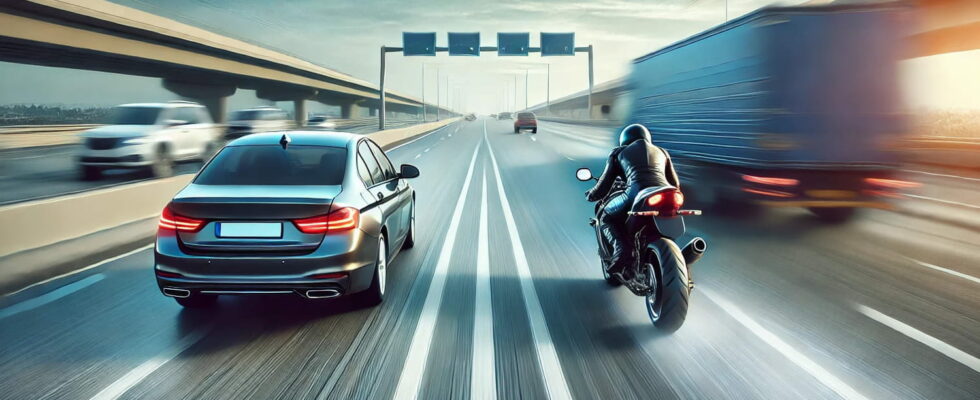Some preconceived ideas die hard… At the same speed, could you tell whether the car or the two-wheeler brakes over a longer distance?
When it comes to emergency braking, the difference in distance traveled between a car and a motorcycle can be surprising. However, it is crucial for the safety of everyone on the road. And for good reason: the higher the speed, the longer the braking distance, and each additional kilometer-hour reduces the chances of reacting in time. Remember that stopping distance corresponds to reaction time + braking distance. Furthermore, there is a common misconception that a motorcycle brakes over a shorter distance than a car at the same speed. But then, what is the difference in braking in number of kilometers?
According to road safety data, at 50 km/h, a motorcycle travels 31 meters before stopping, compared to 28 meters for a car. At 80 km/h, the difference is even more marked: the motorcycle takes 66 meters to stop, while a car only covers 57 km. These figures reveal that, in critical situations, a motorcycle requires more room to stop. At 50 km/h, a motorcycle therefore travels 3 meters more than a car, and at 80 km/h, this difference increases to 9 meters. It may not seem like much, but in reality, those extra meters can make all the difference in avoiding an accident.
Why this difference? The motorcycle, although lighter, does not have the same stability as a car, especially in an emergency situation. The two wheels and higher center of gravity make braking trickier, requiring a longer time and distance to come to a complete stop. Respecting speed limits and safety distances are therefore essential, not only for motorists, but even more for motorcyclists. This helps reduce the risk of accidents, especially in the event of emergency braking.
